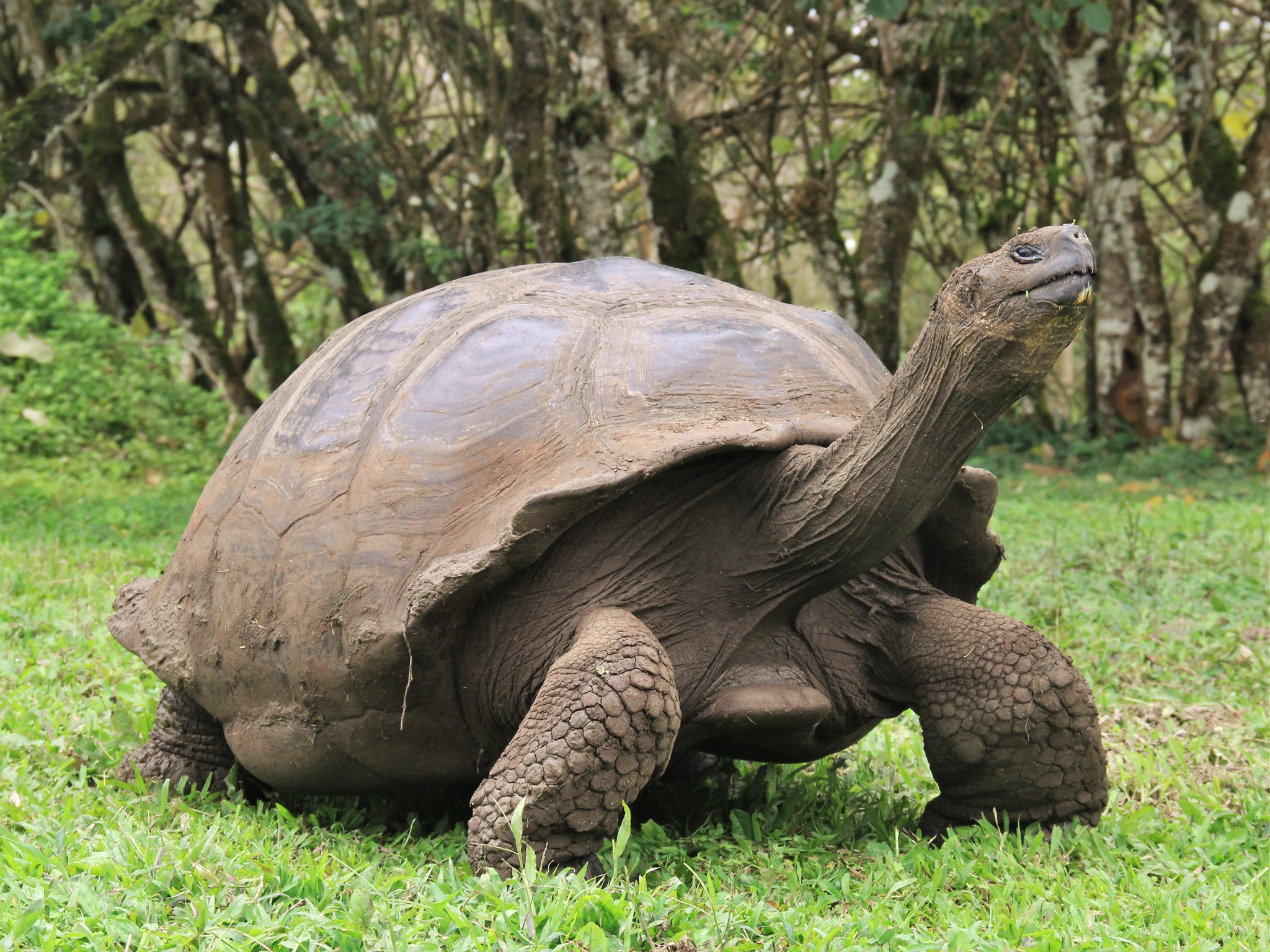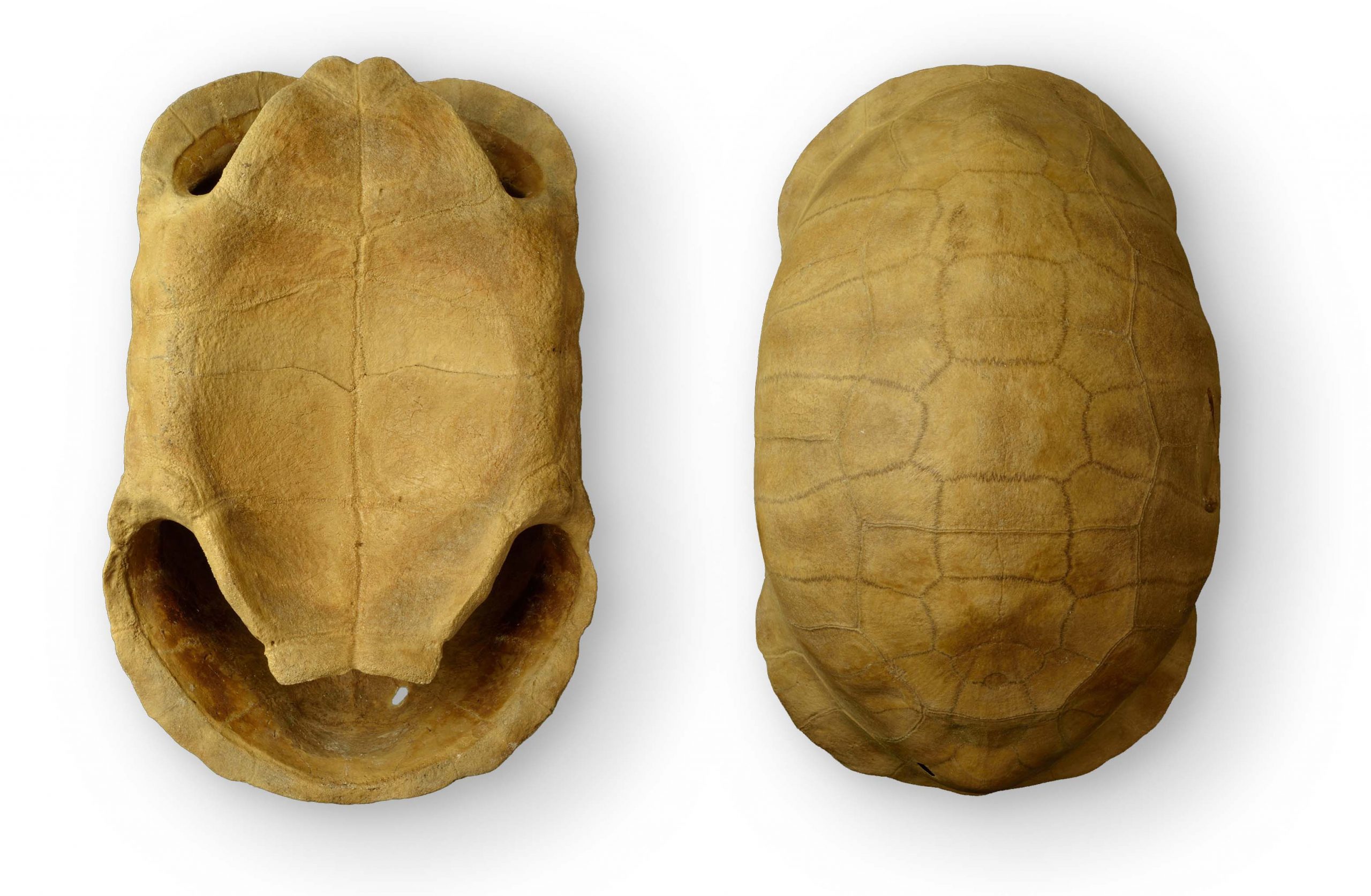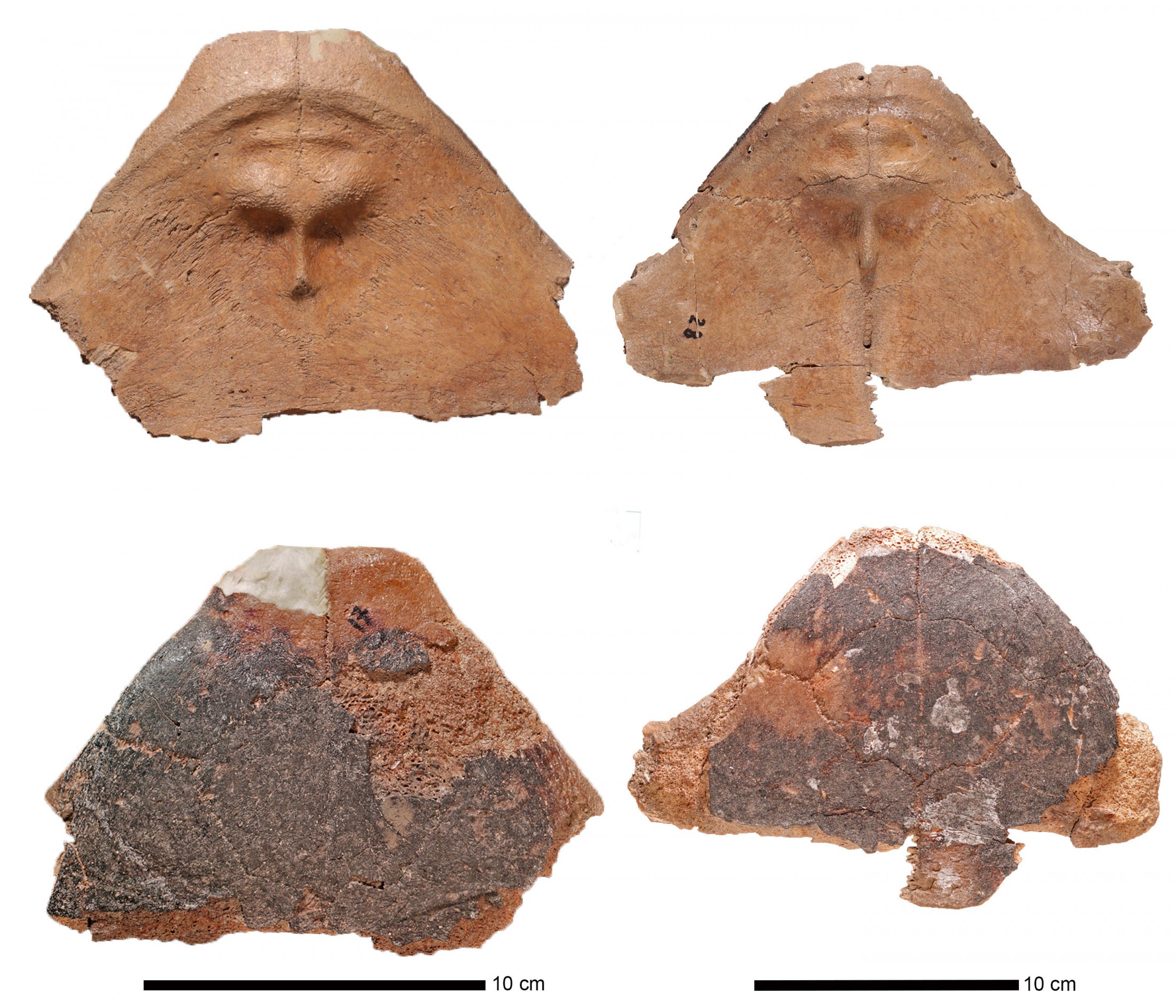My Hero
by Billy Collins
Just as the hare is zipping across the finish line,
the tortoise has stopped once again
by the roadside,
this time to stick out his neck
and nibble a bit of sweet grass,
unlike the previous time
when he was distracted
by a bee humming in the heart of a wildflower.
Coralie (GT-3), on the west side of North Creek (Grand Turk), is a remarkable place. It was first inhabited about 1,300 years ago and is the oldest known archaeological site in the Turks and Caicos Islands and all of the Bahamas. It provides us with a view of the islands when humans first arrived, before the animal resources of the archipelago had ever been exploited. Coralie was an outpost for short-term visitors from Hispaniola who came to the island to harvest its abundant resources. This tells us that Grand Turk was already a popular tourist destination 1,300 years ago!
Animal bones were exceptionally well preserved in the site’s dry, sandy soil. The most prominent were from sea turtles, whose upper shell was used as a cooking pot. Nowhere else in the Caribbean have the bones of sea turtles been found in such abundance. In addition, the bones of some iguanas are almost twice the scientifically recognized size for this species. This is an example of the gigantism sometimes exhibited by species on islands, a biological phenomenon in which the size of an animal species isolated on an island increases dramatically in comparison to its mainland relatives. Birds, such as the red-footed booby, no longer live on Grand Turk, and the inordinately large fishes show the benefits of being the first to inhabit a pristine island setting. While amazing in their own right, the discovery of a previously unknown species of tortoise topped all.

Photo by joseluisblazquez, CC BY-NC 4.0
The partial remains of eleven tortoise individuals were found throughout the GT-3 deposits. Several of their bones from the earliest occupation are burned, which shows that they were butchered and eaten soon after people arrived. What is surprising is that after these first meals, tortoises were mostly left unmolested for almost 400 years. But during the final visit of people from Hispaniola, sometime around AD 1100, all of the remaining tortoises on Grand Turk were rounded up and butchered. This renewed interest in the tortoise as food may have resulted from the overharvesting of sea turtles. If sea turtles were no longer as abundant, and we do see a dramatic decline in their size over time, then tortoise may have been the next best option. Or, they may have been ignored because the taste of tortoise meat was not to their liking. After all, everyone has different food preferences. In the book “The Yearling,” for example, immigrants to Florida from the island of Minorca are disparaged for eating gopher tortoise. Local Floridians would have nothing to do with them. However, the Minorcans probably had a good reason. The Catholic church does not classify tortoise as “meat,” so tortoise can be eaten on days when abstinence from meat is expected.
Lacking information about tortoises in these islands, we sought help from our colleagues at the Florida Museum of Natural History who specialize in herpetology. They too were amazed and knew of only one reported tortoise bone from the Banana Hole paleontology site on New Providence Island, Nassau. We anxiously waited for their findings, but the ensuing biological research proceeded at tortoise-like speed. An answer began to emerge with the 2004 discovery of a variety of fossil animals and plants preserved in the anaerobic sediments at the bottom of Sawmill sink blue hole — a subsurface void in carbonate bedrock that is open to the Earth’s surface and extends below water — on Great Abaco Island (northern Bahamas). The nearly complete fossil tortoise skeletons renewed interest in the study of Bahamian tortoises and eventually resulted in the first extraction of ancient DNA from a tropical species. Once again, the tortoise came in first!

Ancient DNA revealed that Bahamian tortoises belong to a group of Neotropical tortoises that includes species living today in South America and the Galápagos Islands. They diverged from these relatives about 2-3 million years ago. Tortoises were once widely distributed throughout the Caribbean, and an extinct species of giant tortoise was recently described in the Dominican Republic. They are today found only in Cuba, Hispaniola and a few of the southern Lesser Antilles outside of Central and South America. The fossil species are related to the red-footed tortoise, which is today a popular pet.
In addition to Grand Turk, recent paleontological research has identified tortoise bones in cave deposits on virtually every island in the Bahamian archipelago, including Indian Cave on Middle Caicos. They shared the islands with the Indigenous Lucayans, although GT-3 is the only site at which tortoises have been found in direct association with humans. Current evidence indicates they were driven to extinction about 700-800 years ago, which may be why there is no recorded Taíno name for tortoise — only freshwater turtles, called jicotea. Recognizing that tortoises are important members of tropical ecosystems, the Turtle Conservancy has expressed interest in rewilding tortoises in the Bahamas and Turks and Caicos Islands. But this project is also moving at a tortoise’s pace.
So, how did tortoises get to the Turks and Caicos Islands and the Bahamas? Their story begins at a time of much lower sea levels. Somehow, they managed to reach the Bahamas from Cuba or Hispaniola and spread out across the much larger landmasses. As sea level rose, the large land areas were transformed into smaller island banks. Isolated on islands separated by deep-water passages, the tortoises developed observable differences. As a result, the tortoises from every island looked different, reflecting their adaptation to unique local conditions. The Sawmill sink tortoise is the “parent” species because it was the first to be described scientifically, Chelonoidis alburyorum. There are currently two named subspecies, C. a. sementis from Middle Caicos and ours, C. a. keegani, on Grand Turk. Although others are yet to be officially named, there was perhaps a total of seven subspecies, each restricted to its own small bank, such as Caicos Bank, Acklins Bank and Great Bahama Bank.
Although there was little genetic divergence between these islands, the differences are sufficient to identify two distinct clades, defined as a group of organisms believed to have evolved from a common ancestor. The occurrence of both clades on the same island has been interpreted by biologists as evidence for two separate colonization events. In other words, these clades evolved on different islands and much later came to inhabit the same island. This looks very much like people were involved. It suggests that the Lucayans moved tortoises between islands, perhaps as a managed food source.
The Grand Turk tortoise was of moderate size, measuring about 18 inches in length and about 50 pounds in weight. They were only a third the size of the largest, modern Galápagos tortoises, which are another example of island gigantism. Although it is common to speak of a turtle’s “shell,” this often means only the thin keratinous — like fingernails — layer used to make tortoiseshell jewelry. More appropriately, the bone structure is described as a thin-walled, high dome carapace. A “high dome” — versus a “saddleback” — restricts the extension of the neck, which means that these tortoises had to feed close to the ground. The plastron is flat. When we first saw the muscle markings on the interior of the plastron, they gave the impression of a woman’s face with her head covered by a veil. However, Keegan’s plans to market a “Virgin Mary sighting” never materialized.

The Sawmill sink tortoises were exceptionally well preserved. A total of 226 seeds were found inside two of the complete shells – their last meals. These seeds came from wild mastic and satin leaf trees, which produce plum-like fruits that scatter on the ground in spring through summer. For these seeds to have survived, the animals must have died soon after eating. A stable isotope analysis of the bones was conducted to obtain a more general picture of diet. It showed that tropical grasses, cactus pads and fruits — such as prickly pear and Turks Head cactus — and carrion — marine fishes that washed ashore or were discarded by Osprey — were likely consumed. Modern tortoises have similar dietary preferences, consuming a variety of snails, ants, termites, beetles and carrion.
Modern tortoises can live to be more than 100 years old. They are most active in the late afternoon and early morning. They often rest for 50% of the day and are reported to remain still for five to ten days after a large meal. Resting, of course, is a relative term. Their typical pace is a leisurely 5-20 meters per hour, although they can reach a top speed of 100 meters per hour (only 0.5 mile/hour). They can mate at any time of the year but often show a seasonal preference. Females dig a hole and lay an average of ten golf-ball-size eggs that hatch in about four months. Their small clutch size makes them vulnerable to overhunting. Tortoises are today considered a delicacy in South America, and their populations are declining accordingly.
Prior to the arrival of humans, crocodiles were the main predator of adult tortoise. Crocodiles were once common on many Caribbean and Bahamian islands, although they have yet to be identified in the Turks & Caicos. Crocodile bite marks are clearly visible on many of the Sawmill sink shells, and bite marks on the interior of shells indicate that crocodiles scavenged the discarded carcasses of tortoises and sea turtles after they were butchered by humans.
Christopher Columbus captured a crocodile in a saltwater pond at the northwest point of Crooked Island, in the Bahamas. Having never seen one, he called it lagarto de la agua, Spanish for water lizard. Caimán was later reported as the Taíno name for crocodile. Historians have used GT-3 as proof that people were living on Grand Turk at the time of Columbus’ first voyage, and therefore Grand Turk is Columbus’ first landfall in the Americas. However, our research showed that no people or tortoises had been living on Grand Turk for at least 300 years before he set sail. Had Columbus arrived at an earlier time, he might have named the island for the ubiquitous tortoise, using the Spanish name – Galápagos. Just imagine, you could be visiting the Galápagos and Caicos Islands!
Bill Keegan is curator of Caribbean Archaeology at the Florida Museum of Natural History (University of Florida); Betsy Carlson is senior archaeologist at Southeastern Archaeological Research (SEARCH, Inc.) in Jonesville, FL; and Michael Pateman is former director of the Turks and Caicos National Museum and currently curator/lab director of the AEX Maritime Museum on Grand Bahama.
Editor’s note: This article first appeared in “Times of the Islands.”
Writers: Bill Keegan, keegan@flmnh.ufl.edu;
Betsy Carlson, betsy@searchinc.com;
Michael Pateman, mpateman@ammcbahamas.com